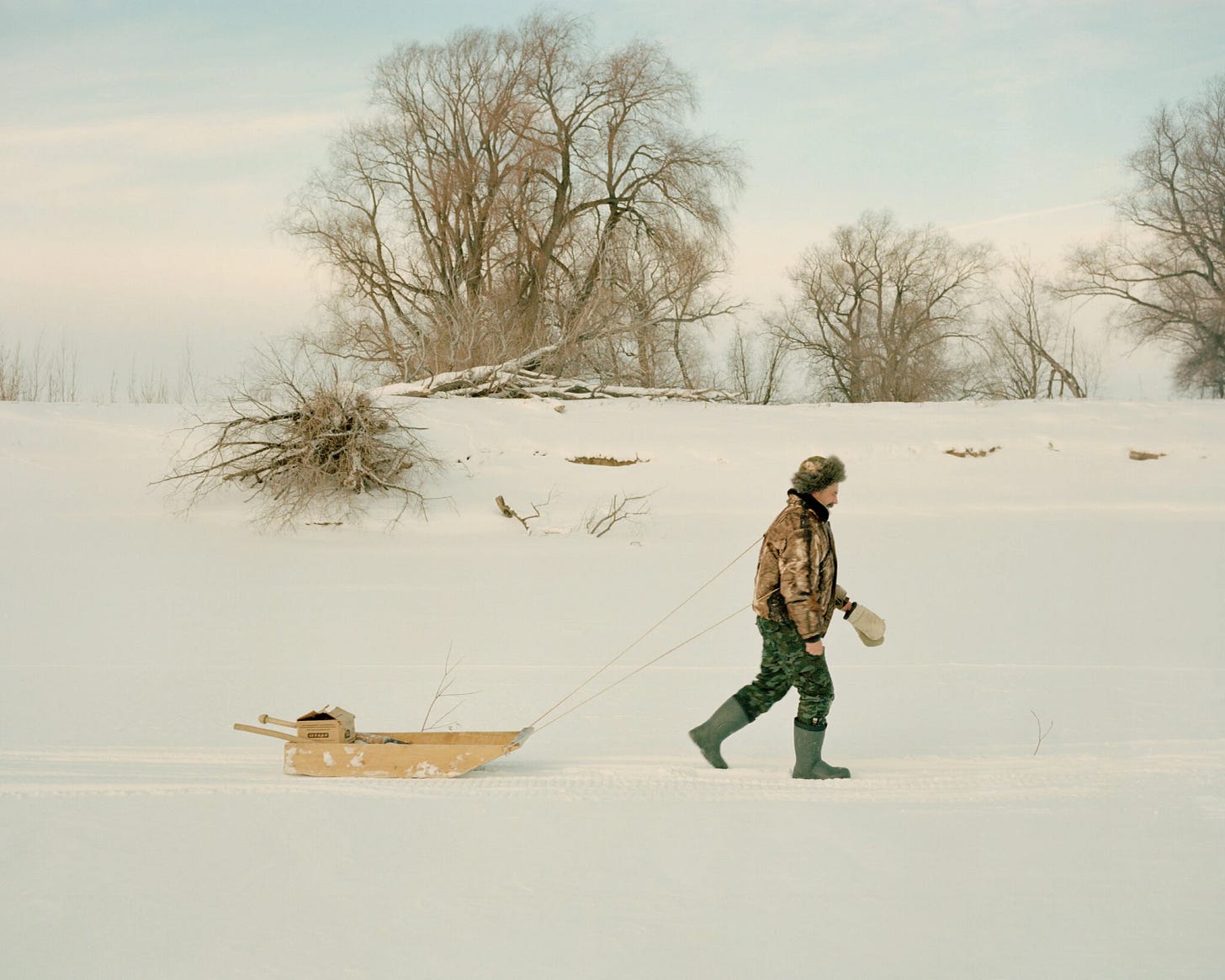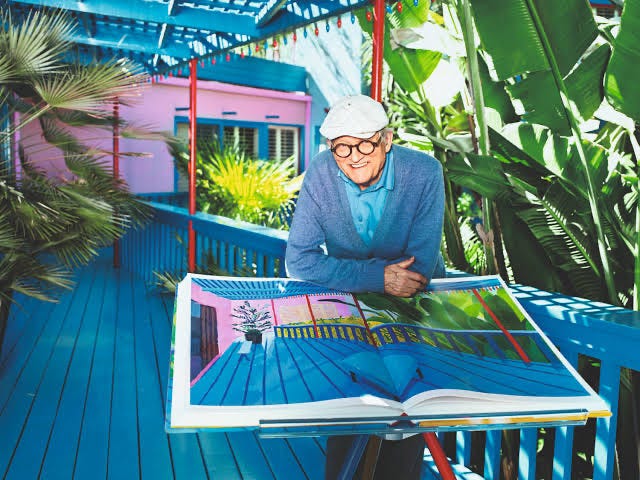023 - Unchained Perspectives
Hello!
I have a biased love for this month. Leaving single digits aside, the year matures. New season beckons. A new letter arrives.
And just so that old things aren’t forgotten here’s one and here’s a second from our very small archive of letters. I am Maneesh, and this is Bombay Daak, my letter mostly on things I’m reading.

It’s a season to end all seasons. Friends have taken off to places, some home, some elsewhere. Respite, escape, longing.
I stay put however, looking at the same thing, hoping to see something different.
I read an essay on others who chose to disperse to far away places even before COVID struck. Centuries before in some cases.
“Take the Old Believers for instance - Persecuted in Tsarist Russia and marginalized during the Soviet era for their religious beliefs, Old Believers scattered across the country, settling in its most isolated corners.
The distance, for them, meant protection.”
The essay brings to life many such stories of communities in the far away corners of Russia. Places disconnected and indifferent, where the cold season is perennial.
But what caught my eye wasn’t just the stories of these isolated communities along the river Ket, instead I was captivated by Emile Ducke’s photos.



They look like paintings, like some 21st century version of Hopper. Although in another essay from when Ducke visited the Old Believers earlier he says the photos remind him of the work of Sergey Gorsky.
Gorsky is famous for his colour photographs of early twentieth century Russia, besides his innovations in the field of colour photography. He wasn’t the only one dabbling in this hot new space then. The first decade of the last century was replete with chemists and photographers trying to bring colour into their black and white works.
Art and Photos: A Perspective
There are plenty of speculative voices online that on the impact of photography on art. Chief among them is the idea that cameras made artists move away from realism to the various art movements that followed. It is surreal to think of this coincidence though, that the arrival of colour photos coincided with the beginnings of experiments with abstraction in art. It was as if the last bastion of the artist’s journey from the mid millennium renaissance was now lost to the camera.
The evidence is circumstantial in this matter. But if you look at the history of art, it has always taken giant leaps with the arrival of seemingly unrelated technical innovations. For instance the Renaissance was fueled by the arrival of the looking glasses, convex mirrors and more. They finally had a tool to see better, and that clarity and detail translated in to the dawn of more realistic art.
I know this because my afternoons these days are spent watching the hour long episodes of BBC’s Perspective show helmed by the affable Waldemar Januszczac. His breakdown of the Renaissance and its true history is captivating!
Hockney’s Many Ways of Seeing
David Hockney has always played around with perspective in his works. A way to look at things, study them. One subject that Hockney studied intently was that of the renaissance masters. Perhaps it took a painter like him to see that the extent of realism they achieved in their work was not purely talent, but also optical aids [^1]. He even has a paper on this matter called the Hockney -Falco theory. He figured it out by studying Linear Perspective of the paintings of Old Masters.[^2]
“he saw as a sudden rise of realism around 1420, combined with Charles Falco's suggestion that concave mirrors could have been used in that period to project images, was the germ of the Hockney–Falco thesis.”

Hockney possibly smirking at the old masters on cracking their secret. Who knows! (Via)
A Hockney project that I love a lot is in fact not related to paintings but photography instead. Called Joiners, it was a result of his experiments with the camera to explore photography as an art form.

(Source)
Before the Joiner project he viewed photography as a limited art that only offered a single point of view. Joiners was his way of breaking out of that mould by creating collages of polaroids first and then prints afterwards.
I didn’t quite get Picasso’s cubism until I saw this project by Hockney. I knew it was about multiple perspectives, but I still saw it from a single plane, Hockney’s Joiners changed that. It captured the change in time, view point and still brought the idea of the picture in a unified way.
A great aspect of Hockney’s artistic pursuits is that he doesn’t mind change. Every time technology brings something novel, he embraces it and adapts to it. And in this, it seems, as he himself found out, he learns from the old masters. He learns that seasons change, and we change it with it, knowing we will come back to it and it will come back to us.
A Poem Called - Seasons
By October the reach of sky is complete.
Everything longs for escape –
the snow geese weaving their way south,
the pigs in the yard,
the leaves.
We are walking that line between the trees,
shameful in their half-foliage,
replete with desire.
Somewhere across the valley
there must be another life –
a woman drawing her children a bath,
a husband returned to this picture of wife.
If we believed in seasons
how easily we could hold to this:
this falling away and returning.
But we, who live
with only the heat and rain,
with perpetual dying –
we, who are impervious to birdsong,
we must imagine the sound of love
as something of a deafness –
a single vowel of longing scratched across the sky.
This poem by Tishani Doshi from her collection Everything Begins Elsewhere, it had me from its first line. I wonder which way do I see this season. Time has a way of decaying our sentiments, perspective.
I went looking for an online source to this poem, but didn’t find one. Instead I landed on this set of letters that she and Kartika Nair exchange on Granta. There she touches briefly on poems like Seasons when she talks about how rain works its way into her work. Down in Chennai it is the beginning of a second season of rains now. Here in Bombay we await a hot month.
Endnotes
[1] Hockney brought all these ideas together in his book The Seccret Knowledge.
[2] What led me to BBC’s perspective was this introduction to a true renaissance man. So I figured this would be an apt letter to tell you about him. Michaelangelo might be history’s greatest artist, Da Vinci may be the most enigmatic one. But without Brunelleschi there’s no Italian Renaissance for these masters to have followed. Here’s his experiment that brought the concept of linear perspective to art and changed things forever.


